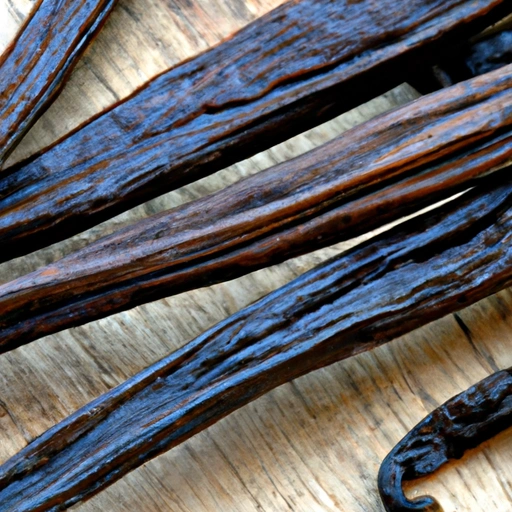Vanilla
Description

Vanilla is a highly valued spice and flavoring agent derived from the orchids of the genus Vanilla, primarily from the Mexican species, flat-leaved vanilla (V. planifolia). Its complex flavor and fragrant aroma make it a favorite ingredient in a variety of sweet and savory dishes. Vanilla is available in several forms including whole pods, powder, extract, and paste, each imparting a unique depth of flavor to culinary creations.
Common uses
Vanilla is widely used to enhance the flavor of desserts and beverages. It is a staple ingredient in ice cream, cakes, cookies, and custards. Vanilla's sweet and perfumed notes also complement the taste of coffee, tea, and smoothies.
Nutritional value
Calories
Vanilla is not a significant source of calories, with a single teaspoon of vanilla extract containing approximately 12 calories (50 kJ).
Protein
Vanilla provides a negligible amount of protein.
Fat
Vanilla contains trace amounts of fats.
Carbohydrates
A teaspoon of vanilla extract has roughly 0.5 grams of carbohydrates.
Vitamins
While not a notable source of vitamins, vanilla contains small amounts of B-complex vitamins such as niacin and pantothenic acid.
Minerals
Vanilla pods may contain minor traces of minerals like magnesium, potassium, calcium, and manganese.
Health benefits
Vanilla has been credited with antioxidant properties, and its scent is often associated with calming and soothing effects. It may contribute to heart health and has been used in traditional medicine to aid in digestion.
Potential risks
Consuming vanilla in typical culinary amounts is generally safe for most people. However, overconsumption of synthetic vanilla flavoring, often labeled as vanillin, can lead to headaches or allergic reactions in sensitive individuals.
Common recipes
Vanilla is a key ingredient in a wide range of recipes including French vanilla ice cream, vanilla bean cheesecake, vanilla custard tart, and various baked goods from cookies to muffins.
Cooking methods
Vanilla can be infused into liquids such as milk or cream, added to batter and dough, or blended into frostings and fillings.
Pairing with other ingredients
Vanilla pairs well with chocolate, fruit, nuts, coffee, and many dairy products. It also complements warm spices such as cinnamon, nutmeg, and cardamom.
Summary
Vanilla is a versatile and beloved ingredient in both sweet and savory culinary applications. Its unique flavor profile and aromatic qualities enhance a variety of dishes, making it a must-have in kitchens around the world. Whether used in traditional recipes or modern cuisine, vanilla continues to be a treasured component in gastronomy.